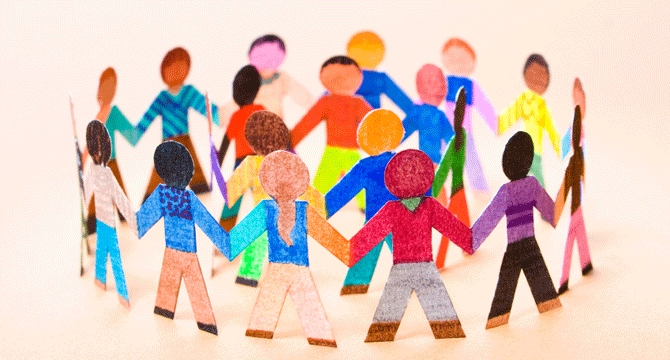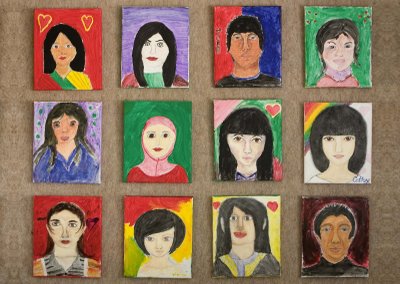With so many new teaching strategies now out there, educators could be forgiven for simply losing track, but culturally responsive teaching is one that all teachers should get to know better.

The great English philosopher John Stuart Mill believed that diversity helped enrich society. This is certainly true when it comes to the classroom too, but are enough educators truly paying enough attention to the varied needs of a diversified classroom?
What is culturally responsive teaching?
In a recent interview with Edutopia, Zaretta Hammond, author of the book Culturally Responsive Teaching and The Brain explained:
“In reality, cultural responsiveness is more of a process than a strategy. It begins when a teacher recognizes the cultural capital and tools students of color bring to the classroom. She is then able to respond to students’ use of these cultural learning tools positively by noticing, naming, and affirming when students use them in the service of learning.”
So how does a teacher become culturally responsive, and how can this method be applied on a practical level? For Hammond, the first steps are clear – work on building a strong level of understanding and trust between students and teachers:
“Teachers need to simply begin with understanding the cultural dimensions of communalism – most communities of color have this cultural trait in common; namely, a focus on the interdependence of the group.”
“It is important to build trusting relationships with students who feel marginalized or misunderstood. The neuroscience is clear on the connection between emotions, trust, and learning. Stress hormones from mistrust block cognition. Students respond to a teacher’s focus on care by giving her permission to be tough and push them toward higher achievement.”
Tips for teaching a diverse classroom
Once this trust has been established, the ways of getting pupils to digest, memorize and understand learning material are often highly similar regardless of culture: repetition, play, metaphor, recitation, routine and using a blend of content forms.
Below, we offer some tips to help your classroom become more culturally responsive.
1.Use visuals
When there is diversity in the classroom, language can be an issue. Students might not all have the same range of vocabulary, fluency or understanding of abstract terms and concepts.
However, using more visuals in your learning materials can help overcome this. As the brain was an image-processing apparatus long before it became a text-based one too, it is capable of processing images some 60,000 times faster. Images can stimulate a student’s imagination and deepen their comprehension. In addition, studies also show that visuals tend to stick in a pupil’s memory for longer, so using them alongside text can be an effective way of helping students maximize their learning. Mind Maps are a great way of plotting information in a visual way.
2.Class collaboration
One of the most effective ways of helping students to feel comfortable in their surroundings is by getting them to integrate with their fellow classmates. Not only can this help them feel more welcome, it will also help them to learn quicker, as research indicates that when learners help others by instruction, they solidify their own understanding by structuring their knowledge when sharing it with others.
This is one of the core tenets of methodologies such as project-based learning in which students work together on assignments by sharing, analyzing and supporting one another’s thoughts and ideas. It isn’t about simply working in groups, it’s about working as part of a team. While this can be done either in offline or online environments, face-to-face interaction is probably best for younger children.
3.Pay attention
Children need attention. Especially those who may be struggling to adapt to an entirely new environment. Without it, they are likely to feel less included or engaged and more isolated. This kind of stress can act as a barrier to their learning, so it’s vital you dedicate time to listening, responding and being encouraging of their efforts. Even a little can go a long way.

The flipped classroom approach is one teaching methodology that uses class time to put student needs at the center of the lesson. This is because learning material is delivered through online videos or other media, outside of school hours. This gives teachers freedom to then spend time in class discussing lessons with students, listening to their thoughts and working through any issues they may have had.
4.Get creative
Creativity is energizing. It engages students because it employs a sense of play while also fostering a sense of imagination and ingenuity.
In the project based-learning (PBL) model, the teacher sets a task for students and asks them to analyze information, identify problems and use creative thinking to find solutions. PBL also focuses on giving students enough autonomy to allow them to explore themes or ideas for themselves, and plan their own course of action.
It generally also promotes teamwork and cooperation, which opens the way for idea exchange, cultural integration, critical thinking and an appreciation of supportive actions.
The tips above are by no means exhaustive, but they do offer a starting point for making classes more fun, inclusive and creative, regardless of cultural background. And it is not just the students who will develop in such a fluid and inclusive environment. Teachers who embrace different cultures and walks of life in the classroom are sure to enrich their own thinking and teaching skills by employing a variety of classroom techniques to fulfill the needs of their students.
Indeed, diversity should not be a cause for concern and confusion; instead, it should be viewed as a means of overcoming adversity.
Get creating great learning materials with GoConqr for free.
